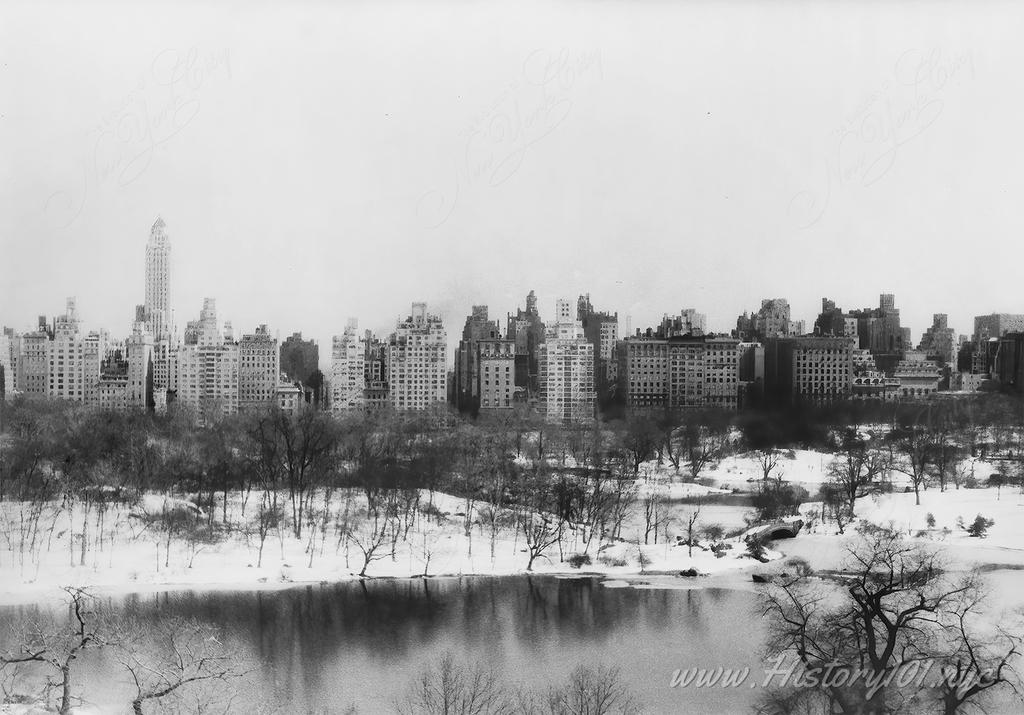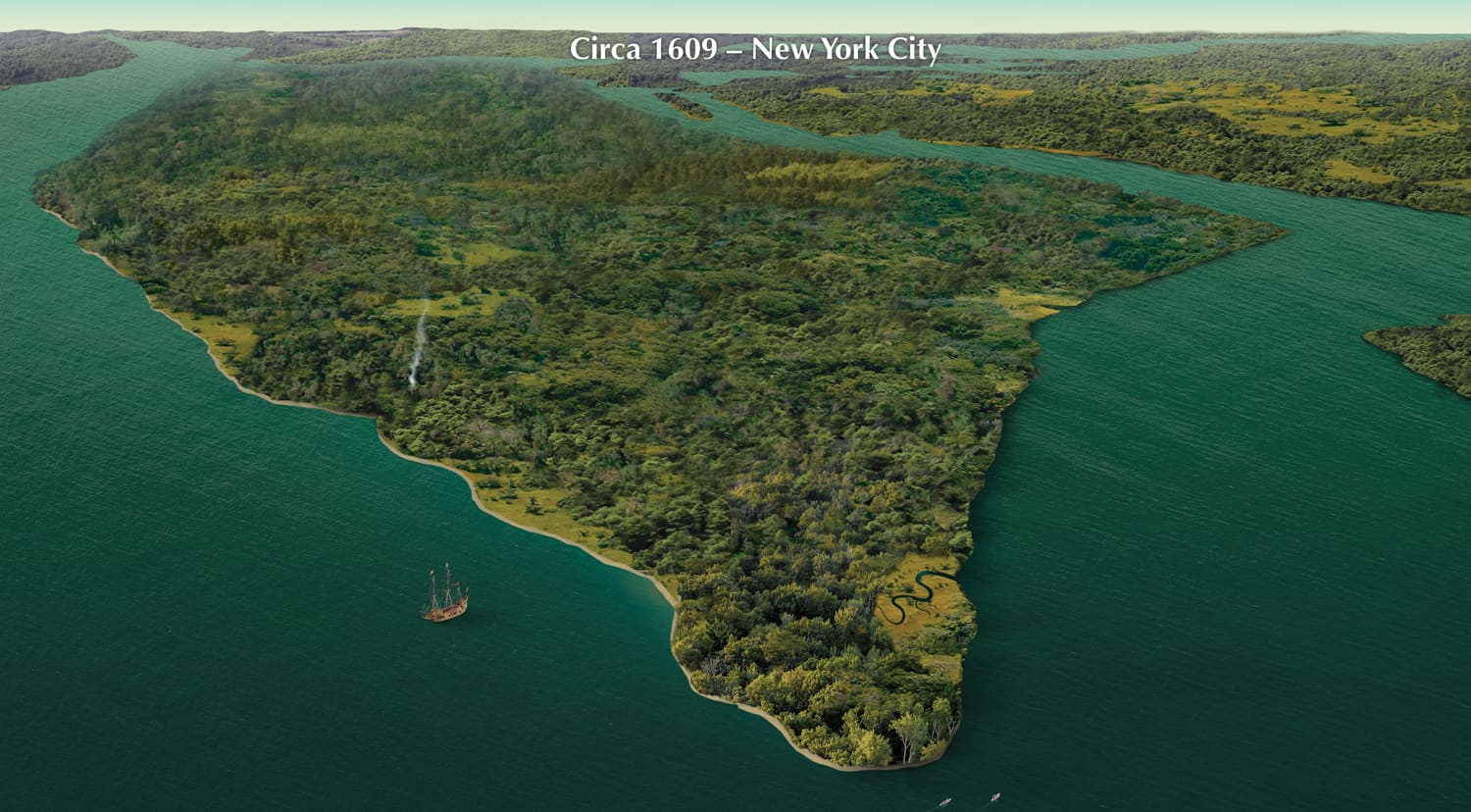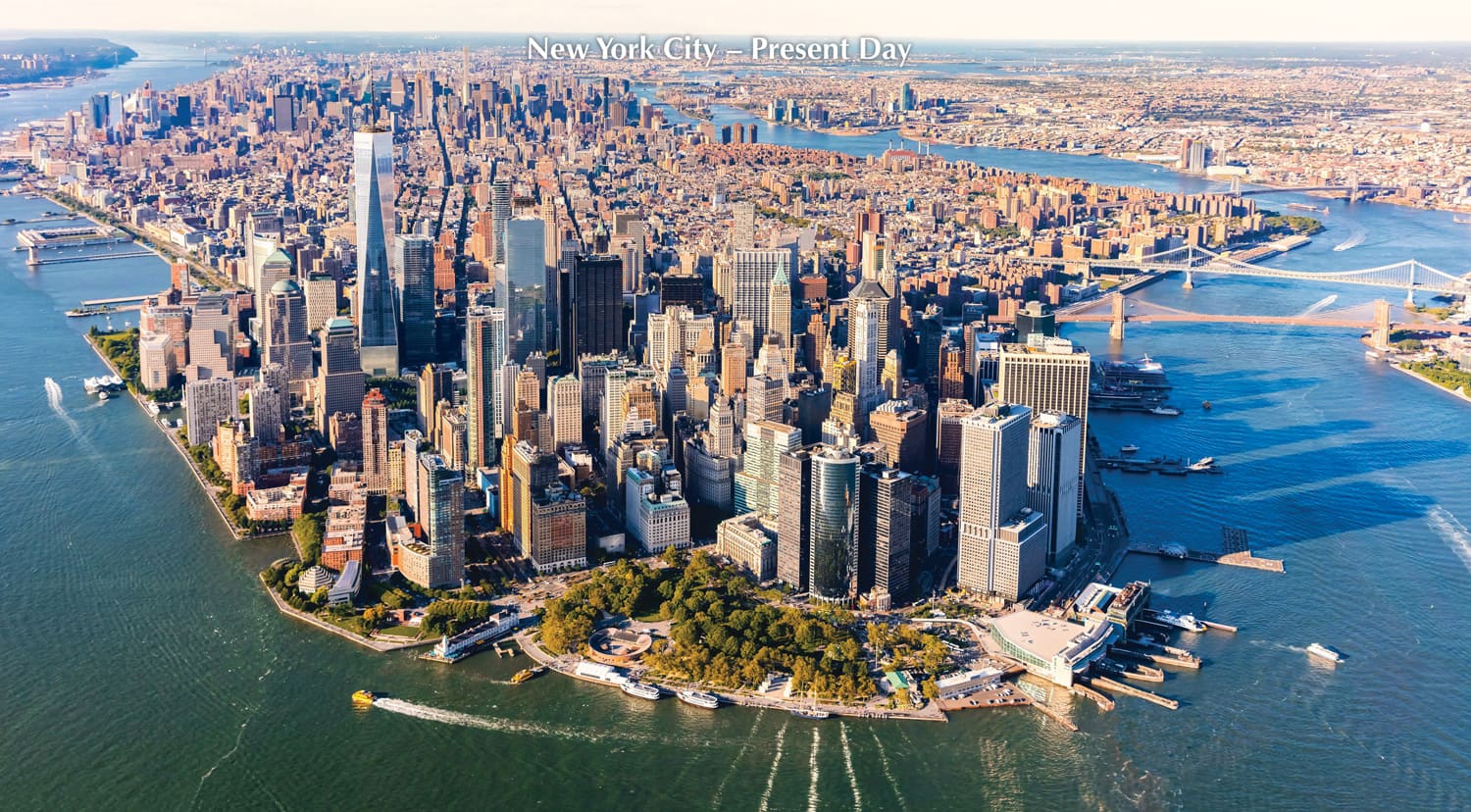
History of Central Park NYC: A Masterpiece of Urban Planning & Natural Beauty in Pictures
Central Park, an urban oasis nestled in the heart of New York City, epitomizes the harmony of nature and city life. Spanning 843 acres, this iconic park, established in 1858, was designed by Frederick Law Olmsted and Calvert Vaux. It was America’s first major landscaped public park, heralding a new era of urban planning. Central Park’s creation was a response to the city’s rapid growth and the need for a green, public space. Its design was selected through a competition, with Olmsted and Vaux’s “Greensward Plan” winning due to its innovative vision.
The park features meadows, lakes, forests, and rolling hillsides, all meticulously designed to provide an escape from the city’s bustling streets. It boasts several attractions, including the Bethesda Terrace, the Central Park Zoo, and the iconic Bow Bridge. The development of Central Park was a significant undertaking, requiring extensive landscaping and the displacement of existing communities, reflecting the complexities of urban development.
Central Park has evolved over the years, adapting to the changing needs of New York City’s residents. It has been a site for public speeches, concerts, and cultural events, reflecting the city’s diverse social fabric. The park underwent a major restoration in the late 20th century, spearheaded by the Central Park Conservancy, restoring much of its original beauty and design.
Today, Central Park is more than just a park; it’s a symbol of New York City, featured in countless films, books, and artworks. It serves as a communal hub for New Yorkers and visitors, offering a multitude of recreational activities. From boating on its lakes, attending performances at the Delacorte Theater, to exploring its hidden corners, Central Park offers a unique blend of natural beauty and cultural richness.
Central Park’s significance extends beyond recreation; it’s a testament to visionary urban planning and the importance of preserving green spaces in metropolitan areas. Its existence underlines the value of such spaces in enhancing urban life, offering respite and community connection amidst the urban landscape.
Central Park (1858) – Timeline of New York City’s History, USA
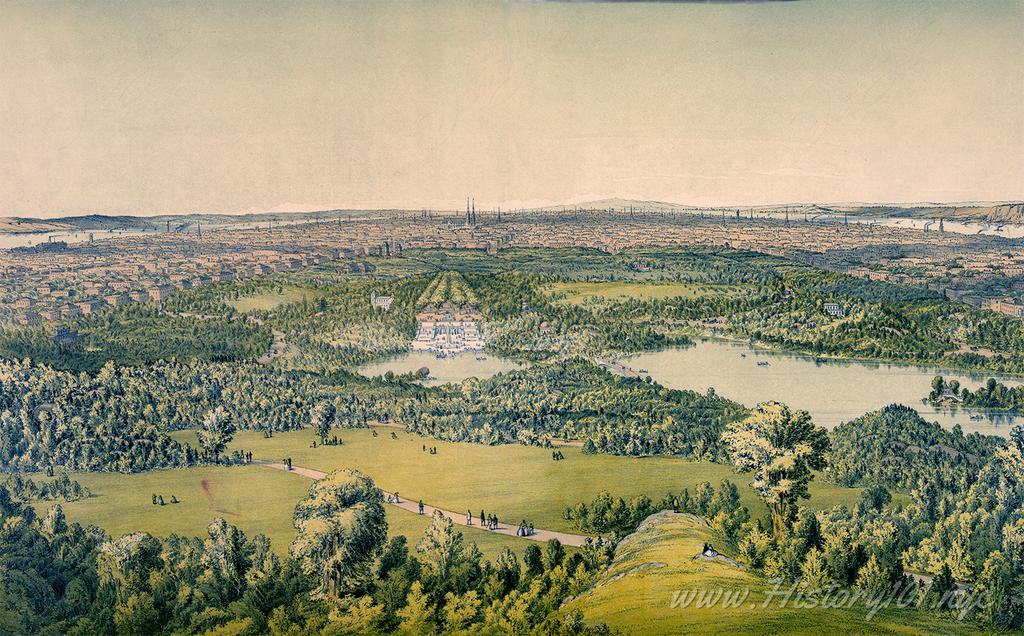
1859: Above Central Park
Illustration of an aerial perspective overlooking Central Park in Manhattan.
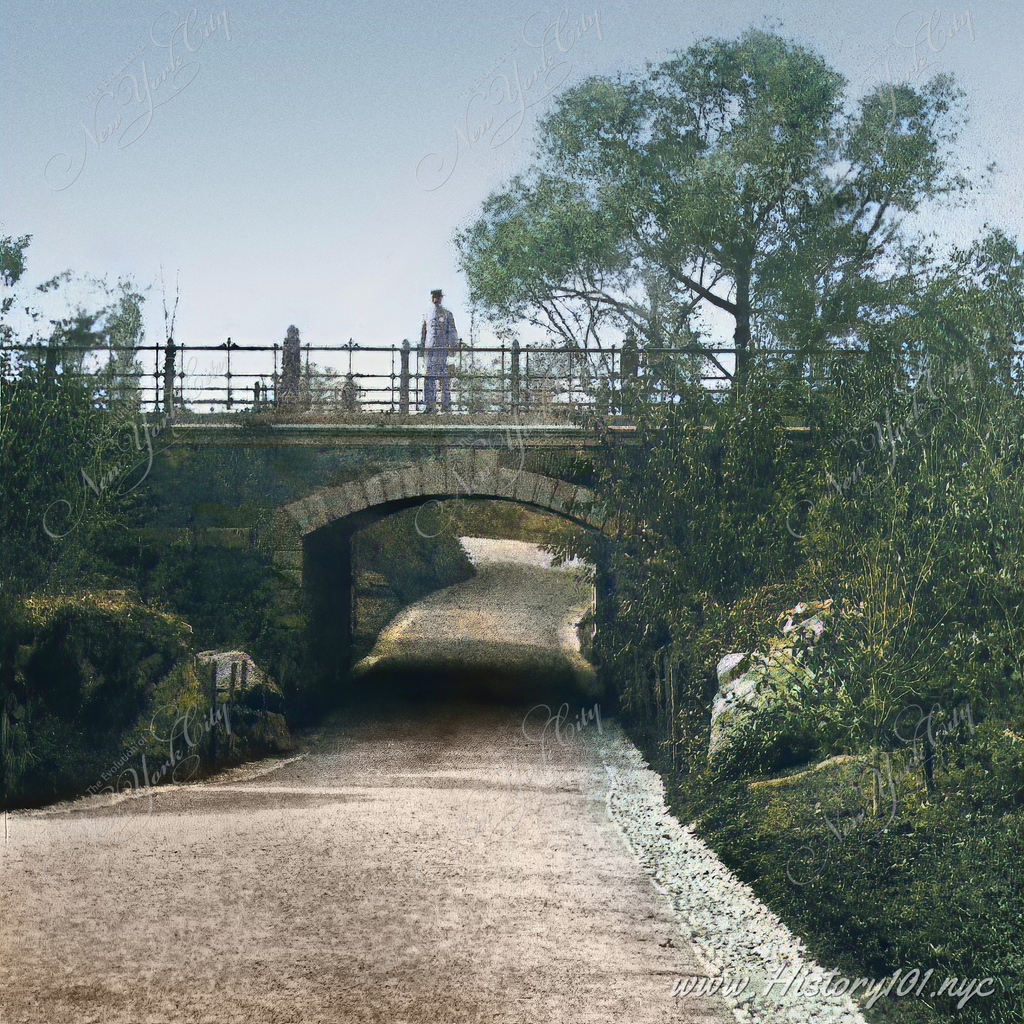
1865: Central Park Archway: Capturing NYC's Historic Essence in George Stacy's Lens
Explore George Stacy's ca. 1865 photograph of Central Park, featuring a man on a bridge above an arched footpath, showcasing historic NYC
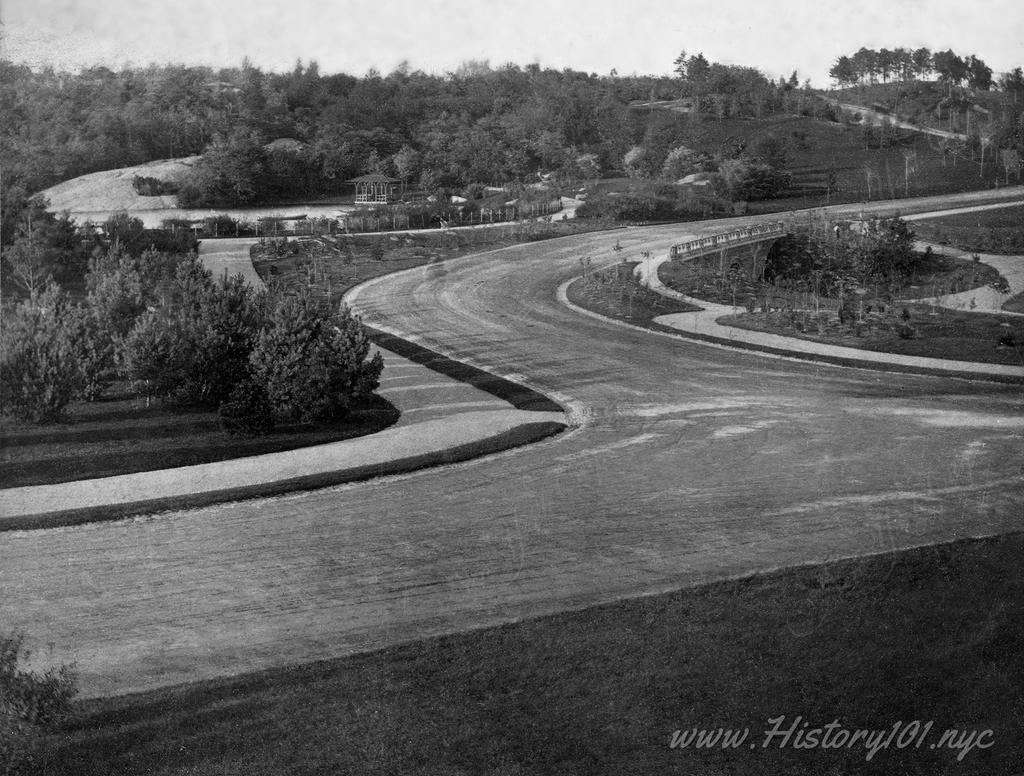
1865: Elevated View of Central Park
A photograph of Central Park in its pristine and far less developed stage, compared to what we know today.
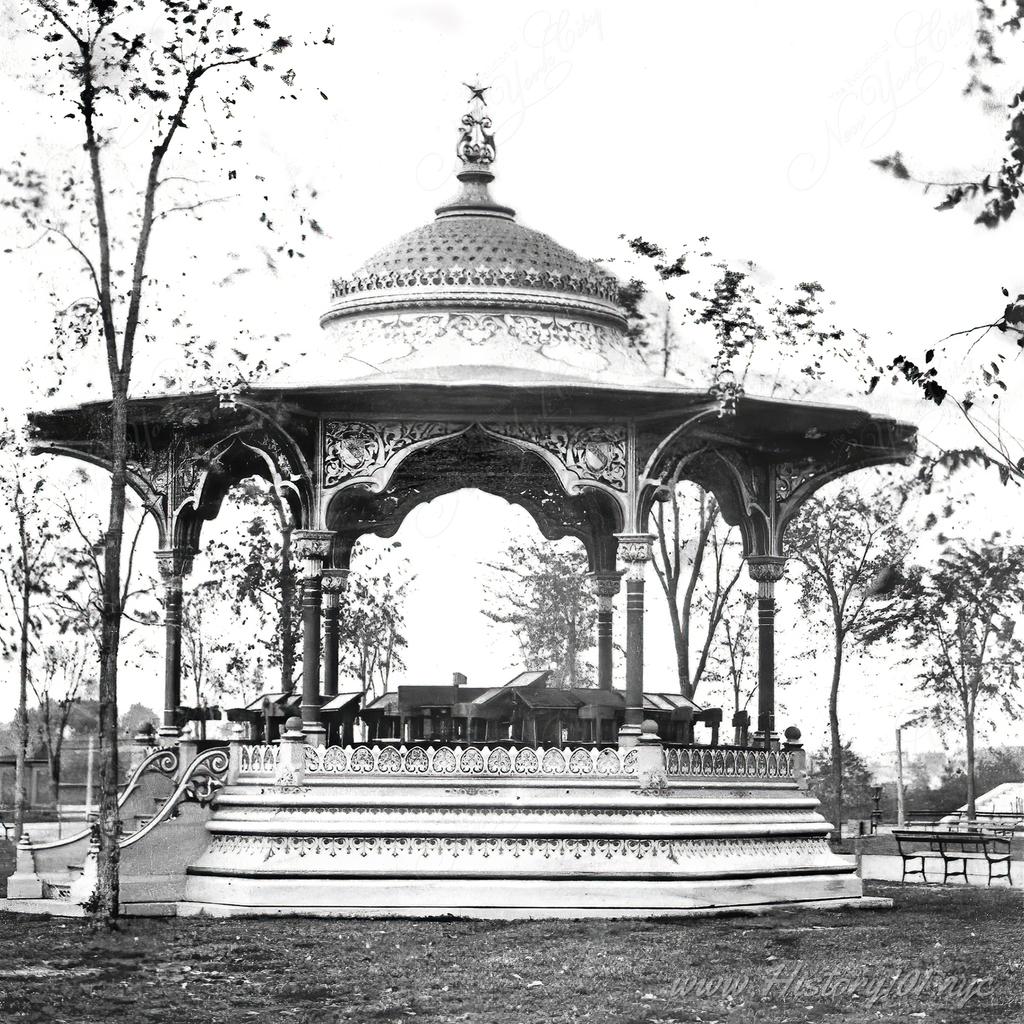
1865: Music Pavilion in Central Park
A photograph of the Music Pavilion on a quiet and overcast autumn day. Taken by George Stacy in 1865.
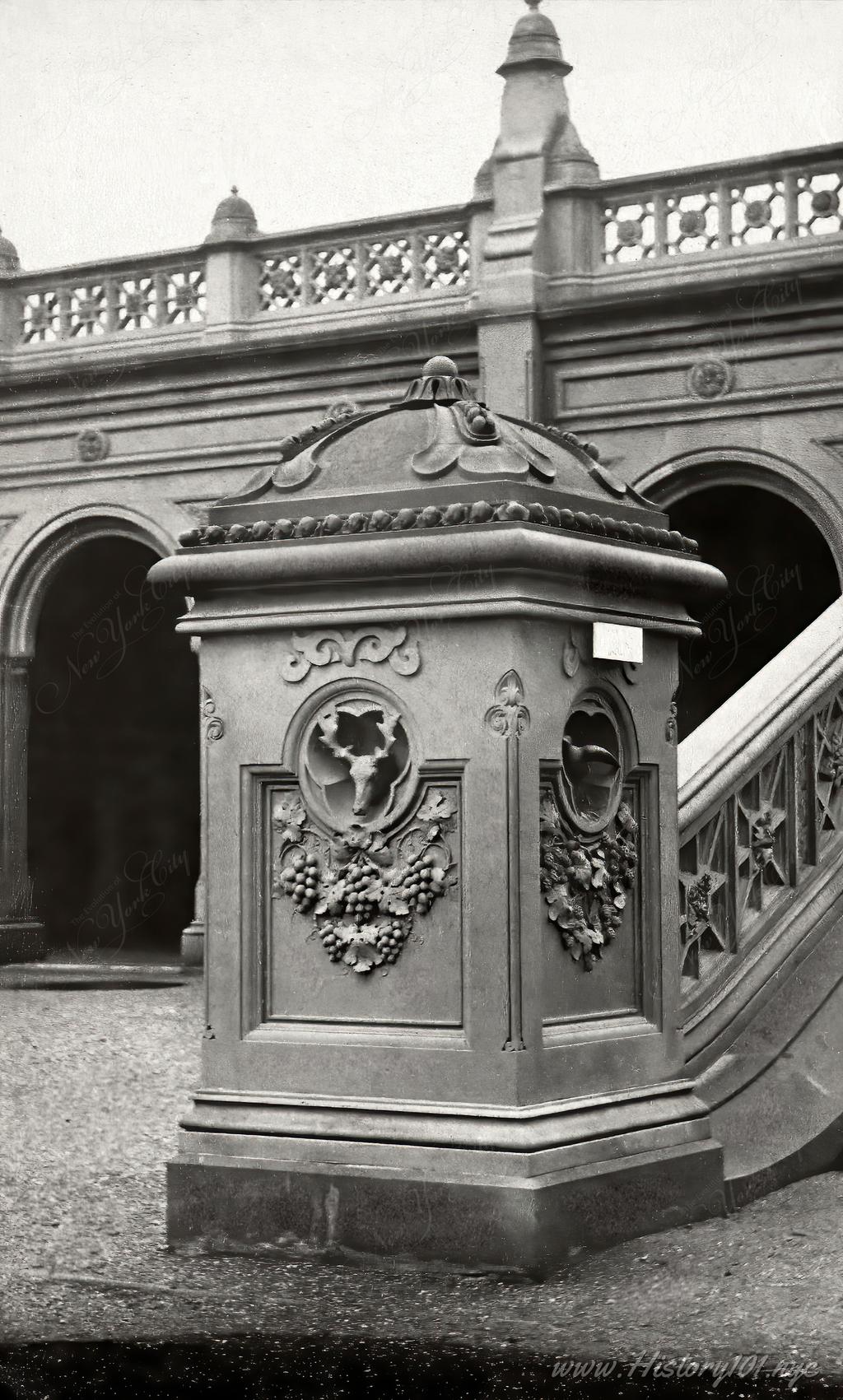
1865: Central Park Terrace Stone Work
A detailed view of Central Park's terrace masonry. The terrace was one of the very first structures to have been built in the park.
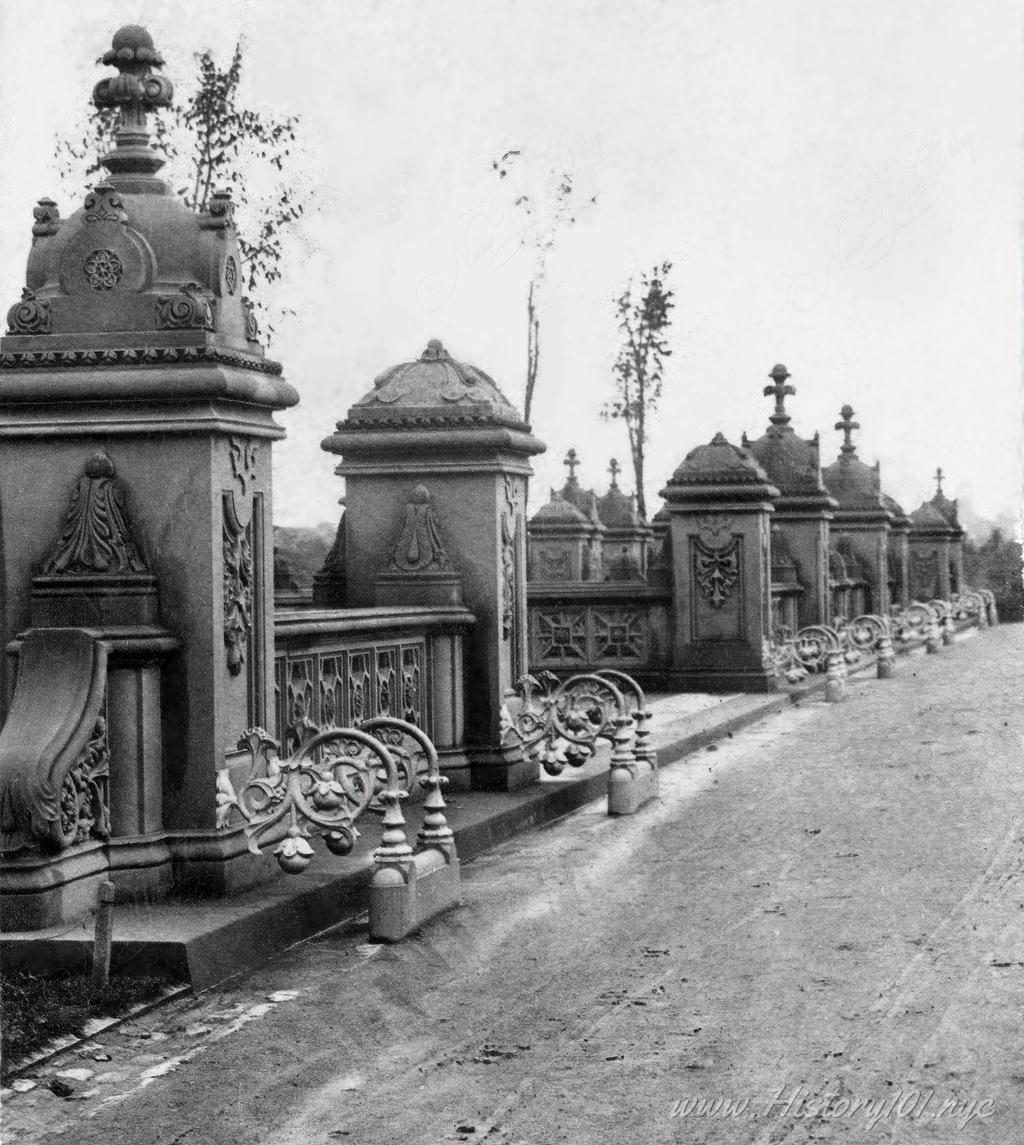
1865: Central Park Stonework
A unique perspective revealing the ornate patterns of Central Park's stonework designed by Frederick Law Olmsted and Calvert Vaux.
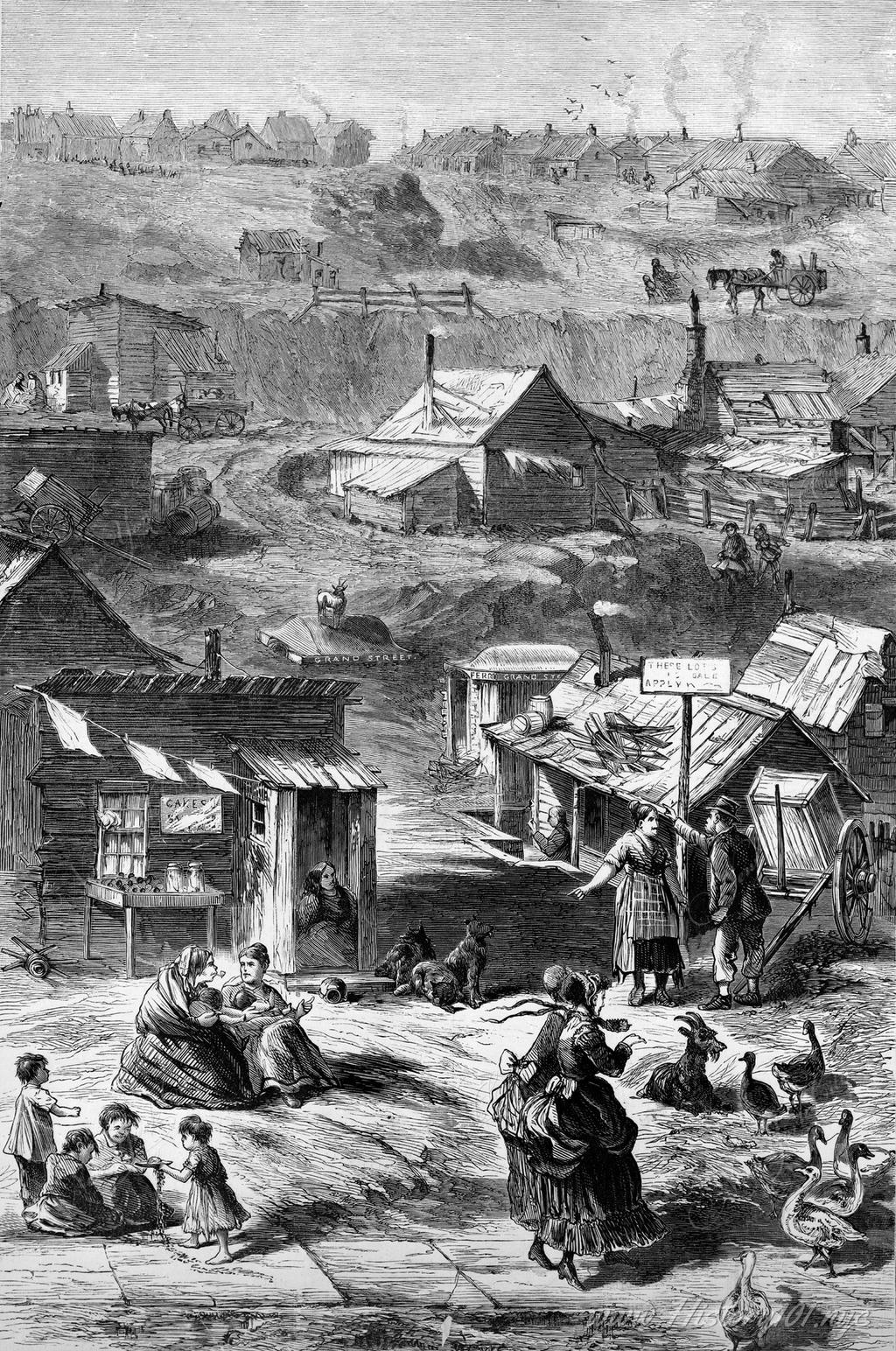
1869: Scene of Squatters Living near Central Park
An artist's rendering of Squatters near Central Park living among farm animals in their shacks.
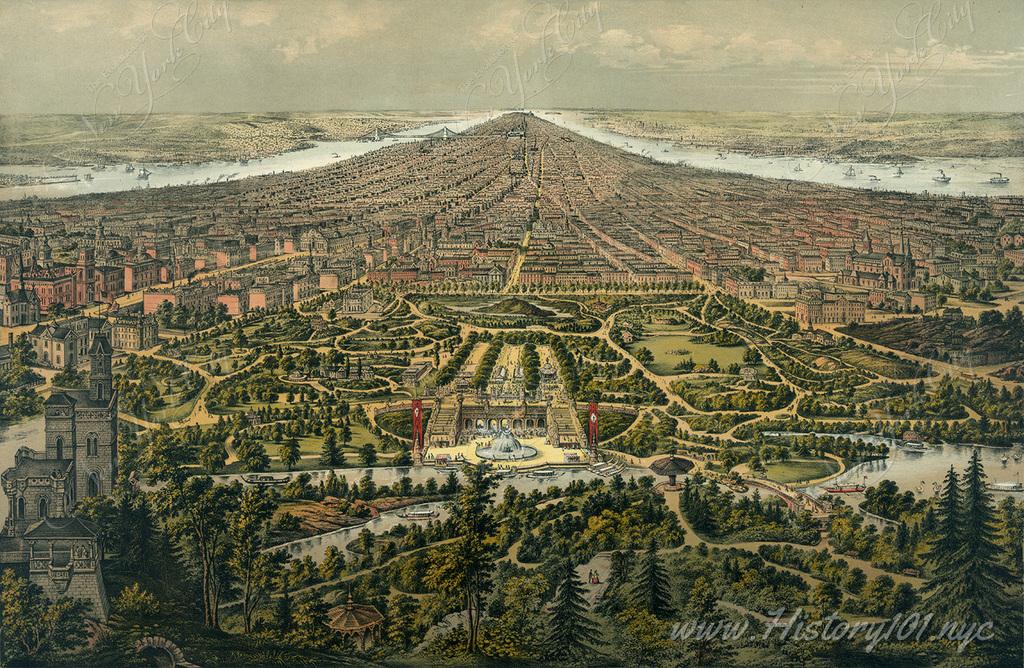
1873: Central Park and Midtown Manhattan
A bird's-eye view of New York with Central Park in the foreground.
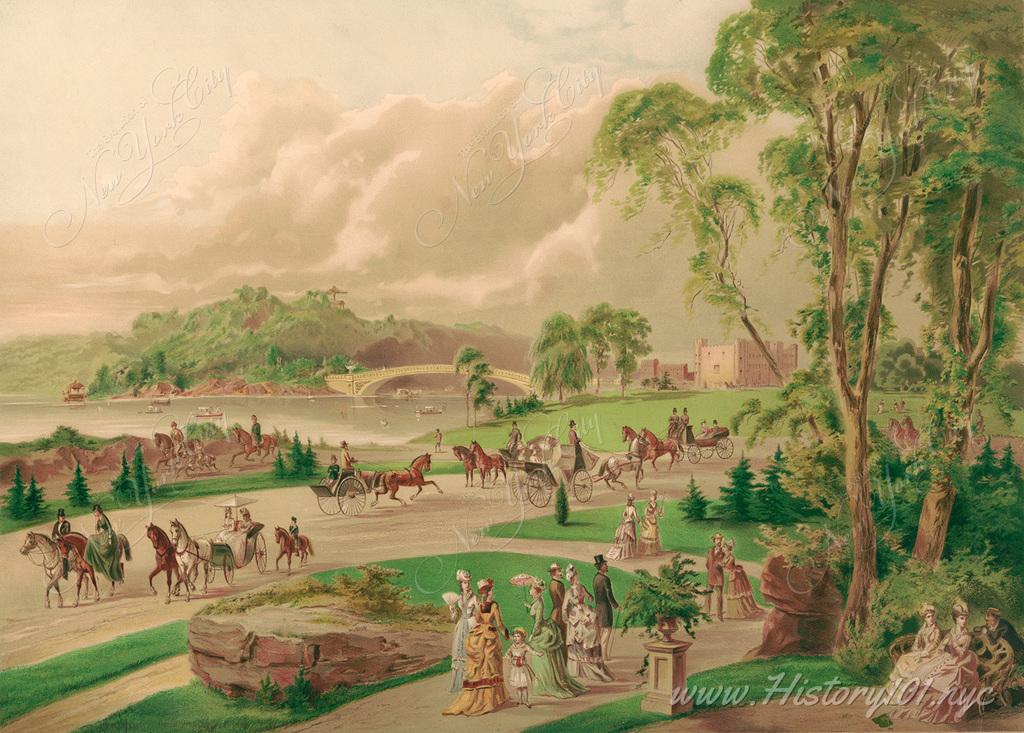
1874: Central Park, New York
A painting which shows New Yorkers enjoying the foliage and scenery at Central Park.
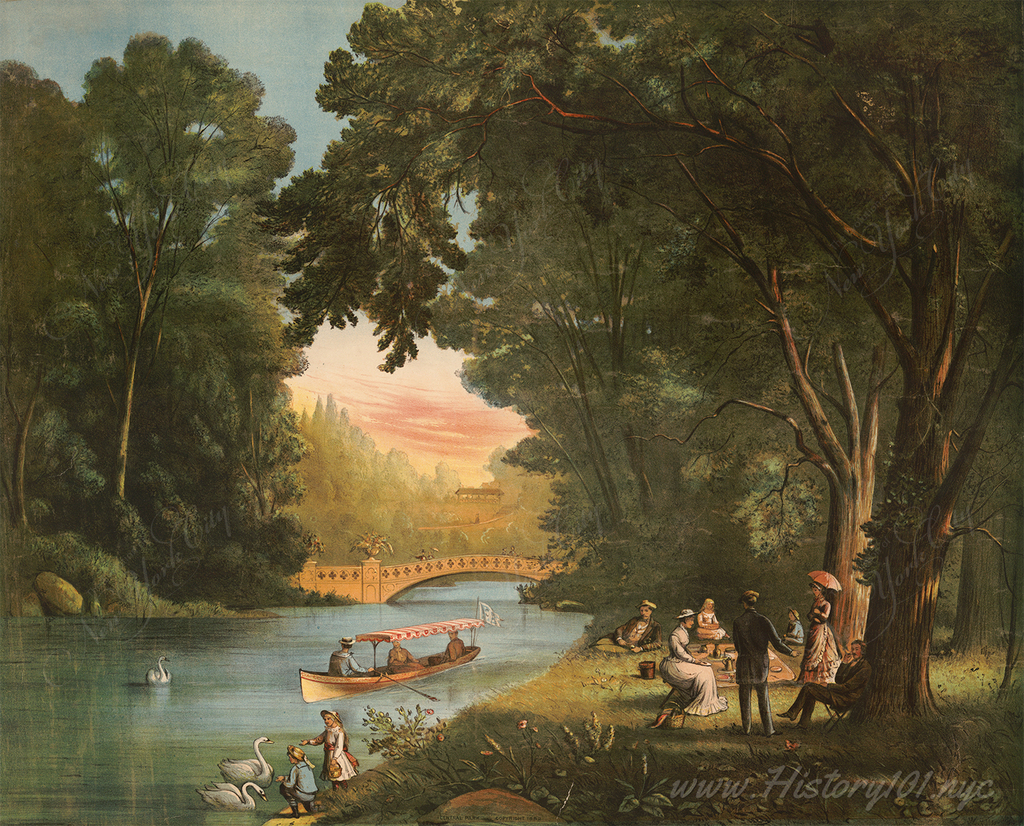
1882: Central Park
This chromolithograph dates back to 1882 and captures a picturesque scene of Central Park in New York City.
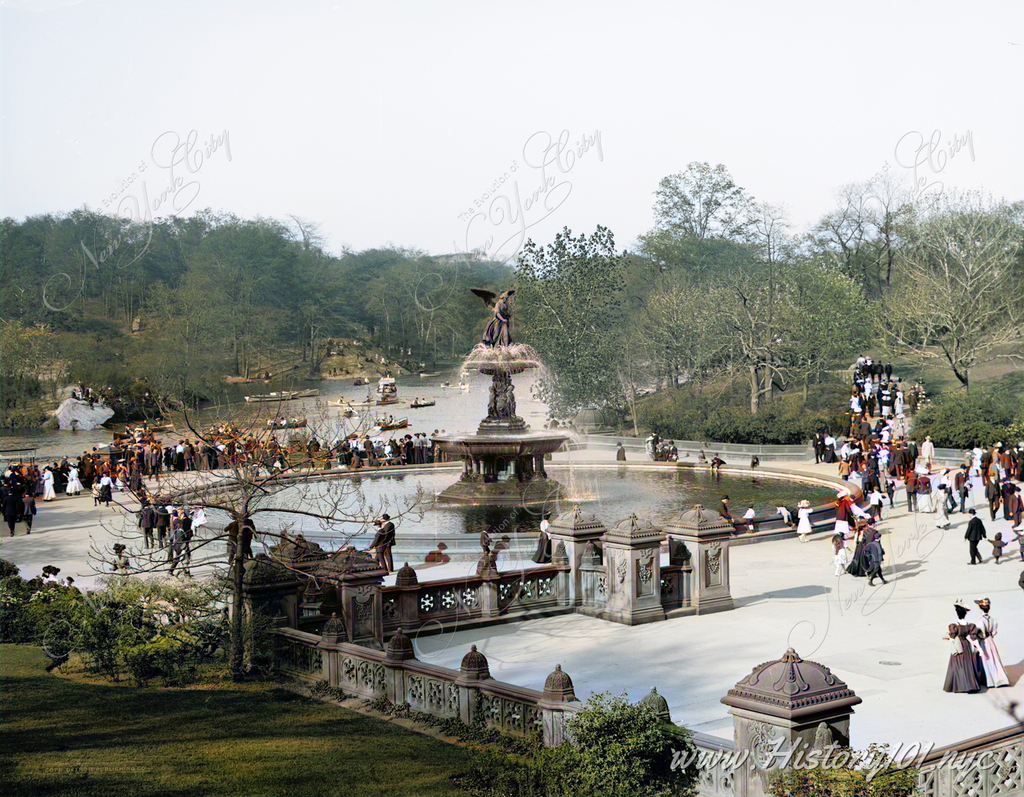
1905: Central Park - Lake and Terrace
A small crowd gathers near Bethesda Fountain to enjoy pleasant weather and boat rides on the lake.
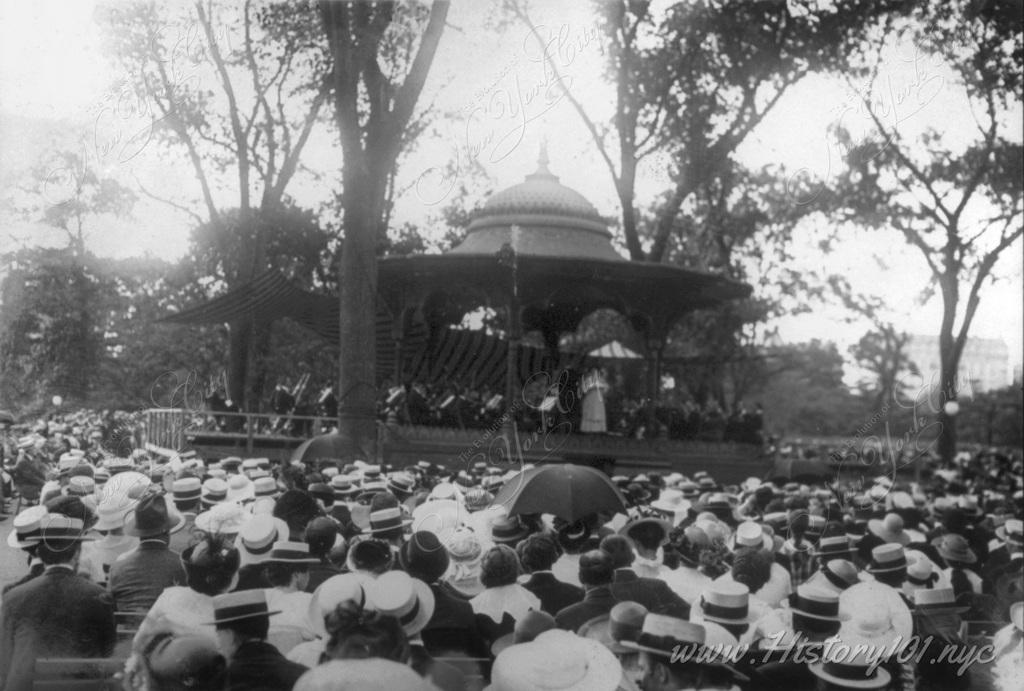
1905: Concert in Central Park
Spectators enjoy a musical performance at one of Central Park's pavilions.
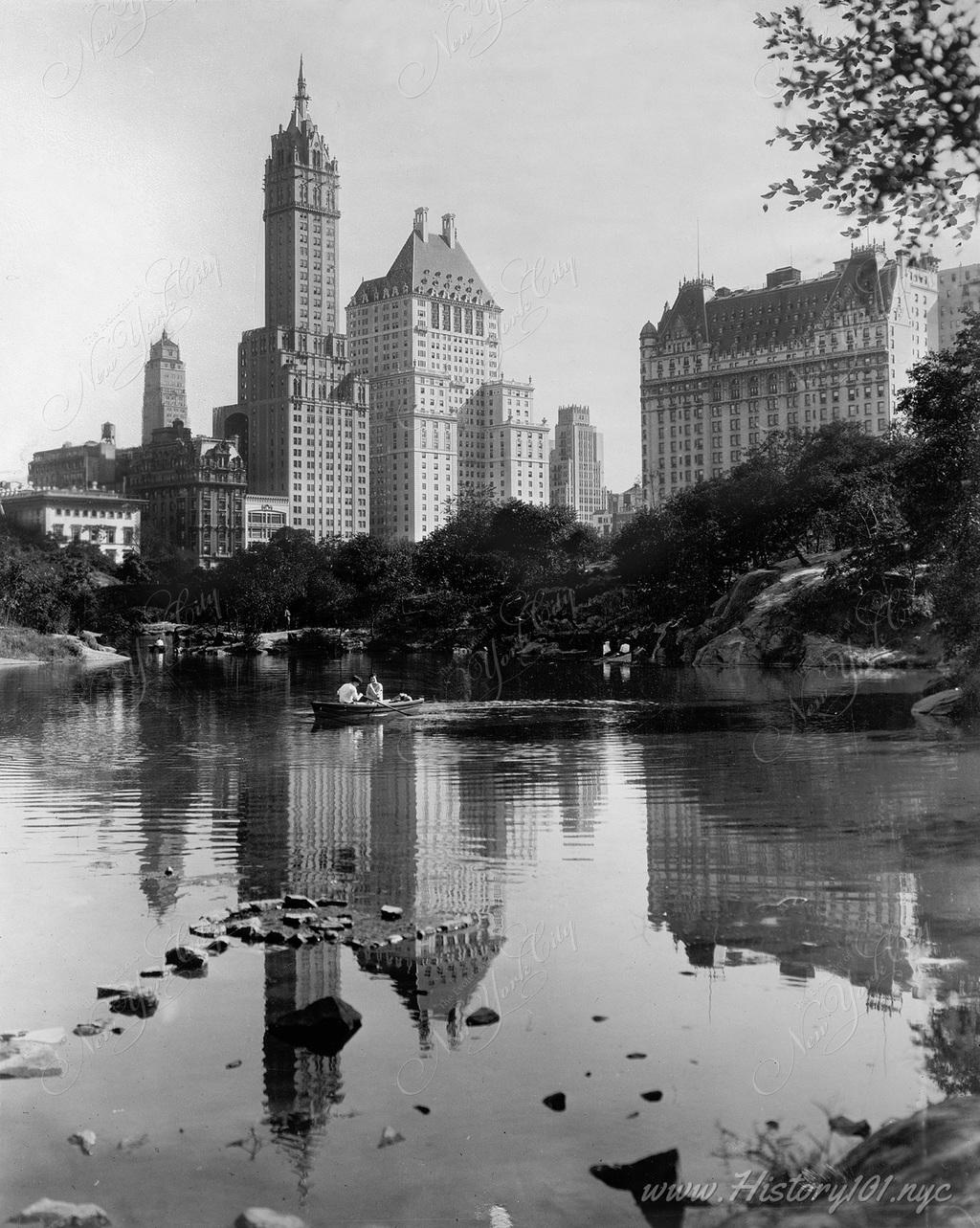
1909: Hotels from the Lake in Central Park
A photograph shot from the perspective of the lake at Central Park towards the luxury hotels which form the skyline.
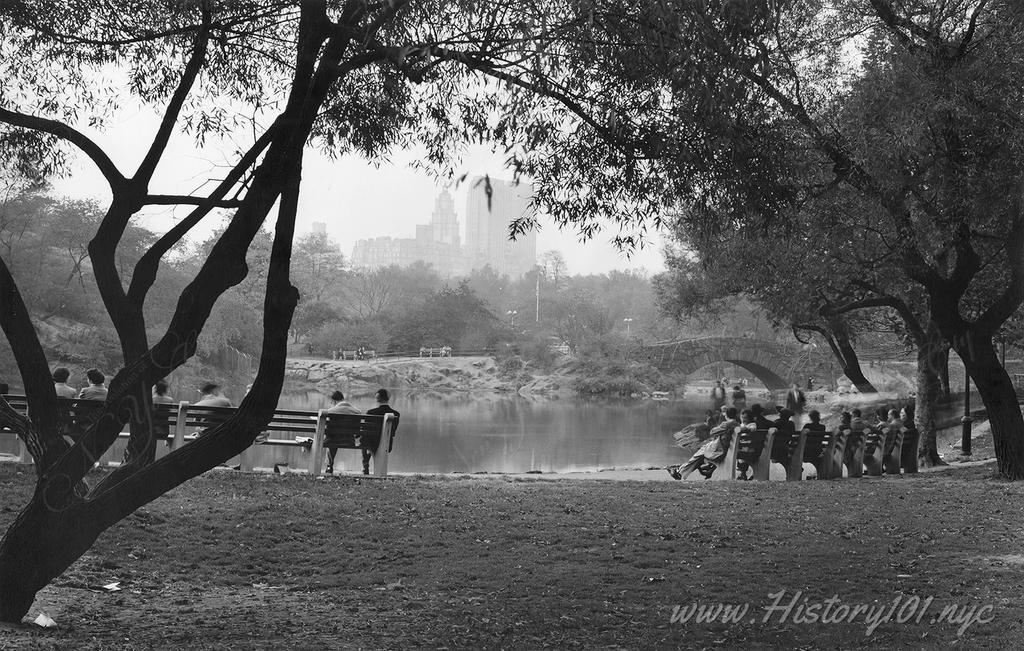
1949: Benches at Central Park Pond
Photograph of men and women seated beneath the trees, enjoying the view across Central Park Pond.
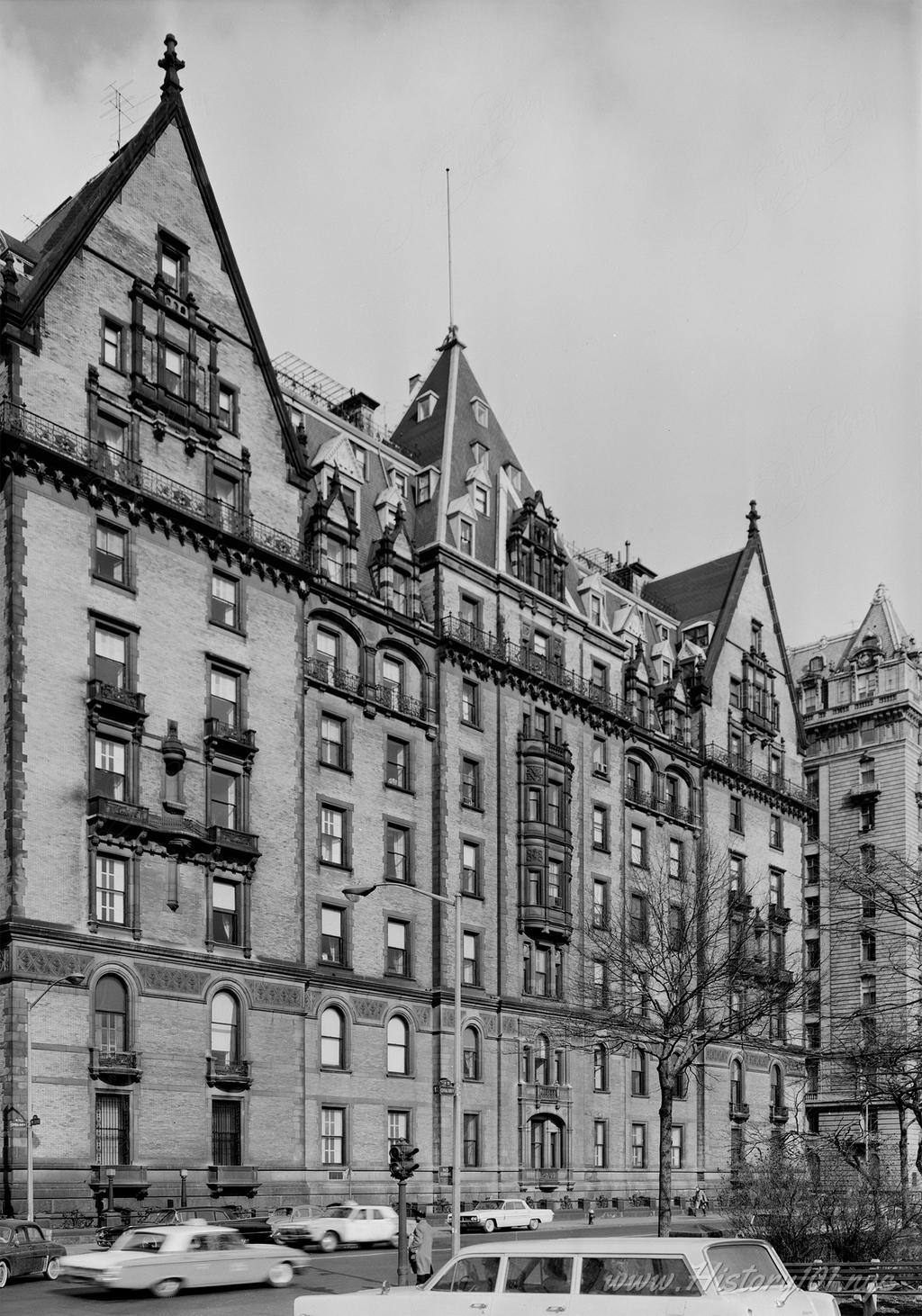
1965: The Dakota, Central Park West
Photograph of The Dakota Apartments, located at 1 West 72nd Street, Central Park West.
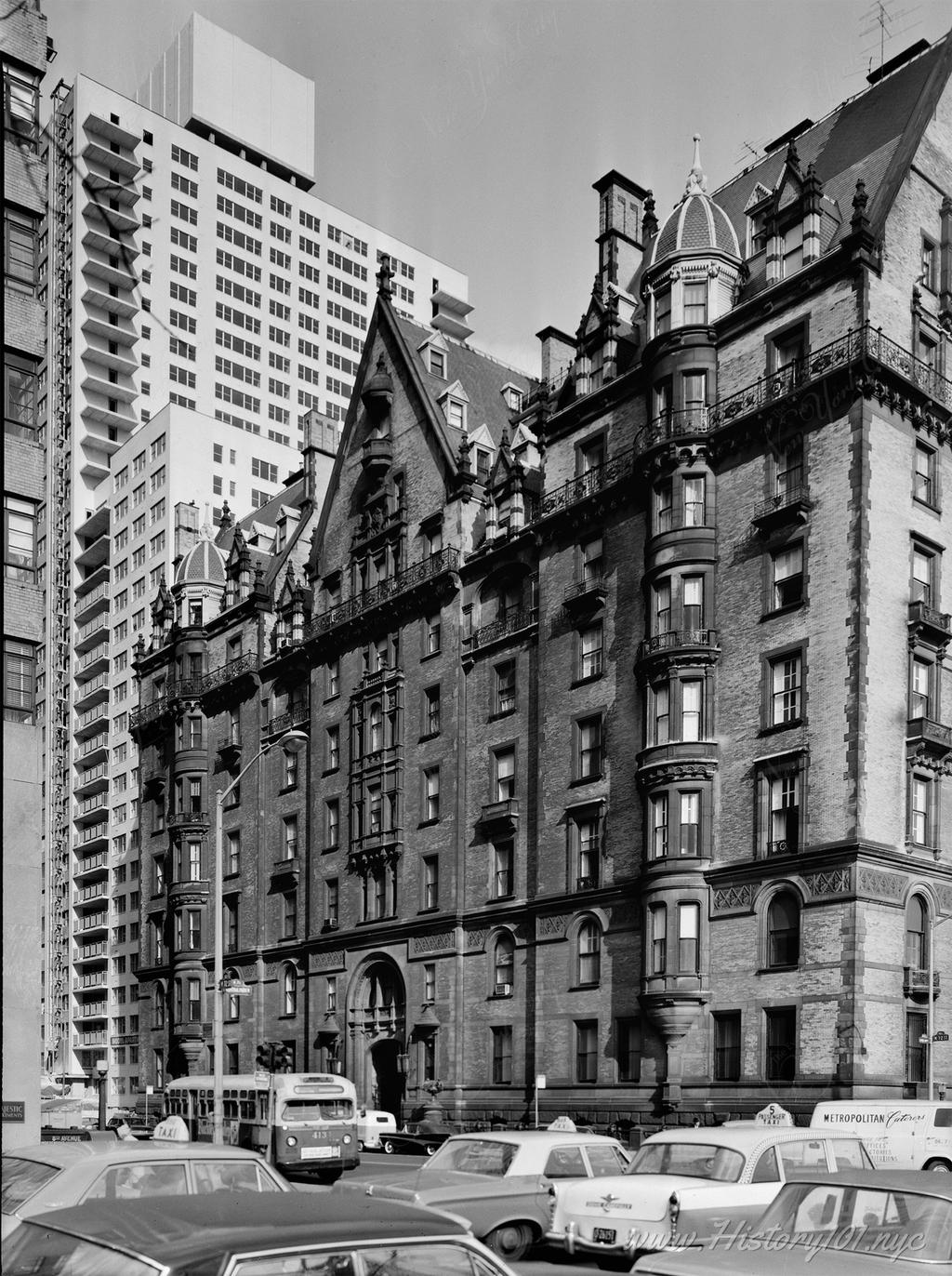
1965: The Dakota, Central Park West Corner
Photograph of the The Dakota Apartments taken from a corner in Central Park West.
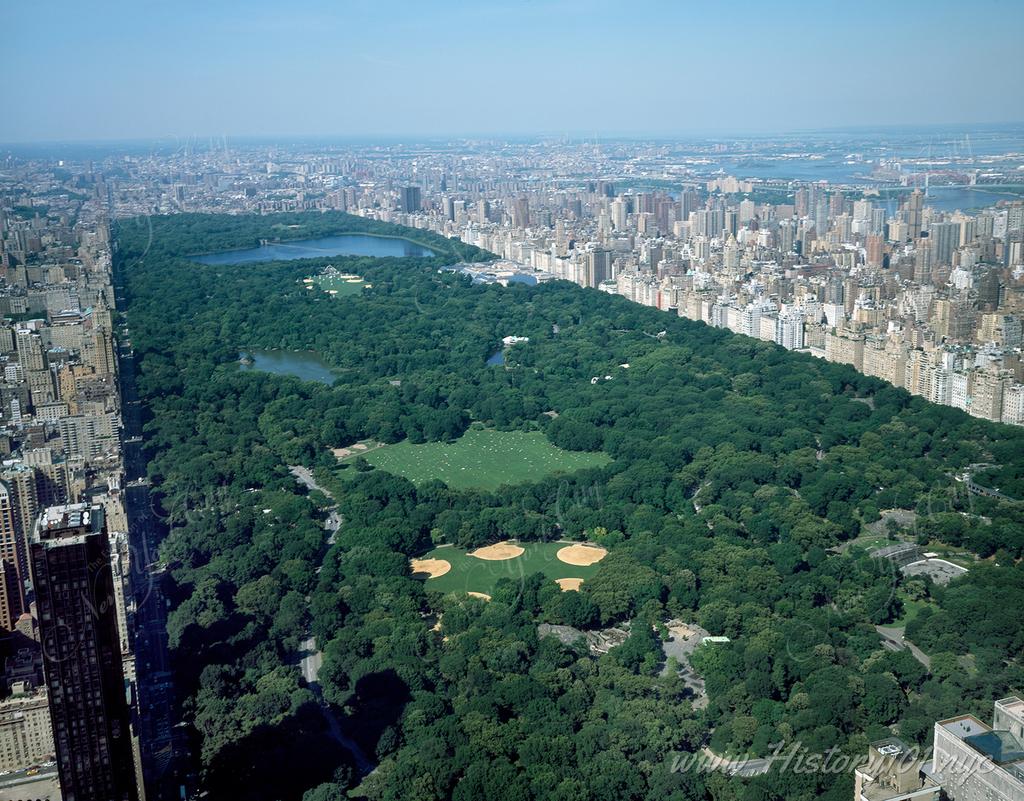
1982: Central Park Summer Aerial: Lush Greenery, Harlem & The Bronx Skyline
Discover Central Park's summer beauty in Carol M. Highsmith’s aerial photo, featuring lush landscapes, active basketball fields, and relaxing meadows with views extending to Harlem and The Bronx
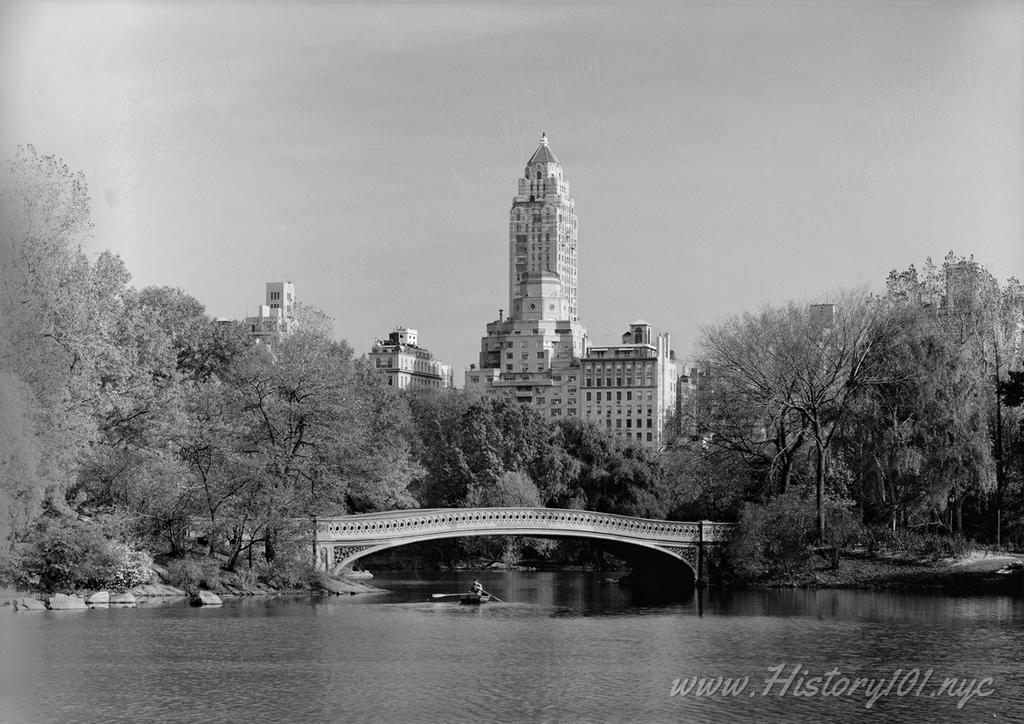
1984: Bow Bridge in Central Park
Photograph of Bow Bridge overlooking the Lake in Central Park with midtown buildings in the background.
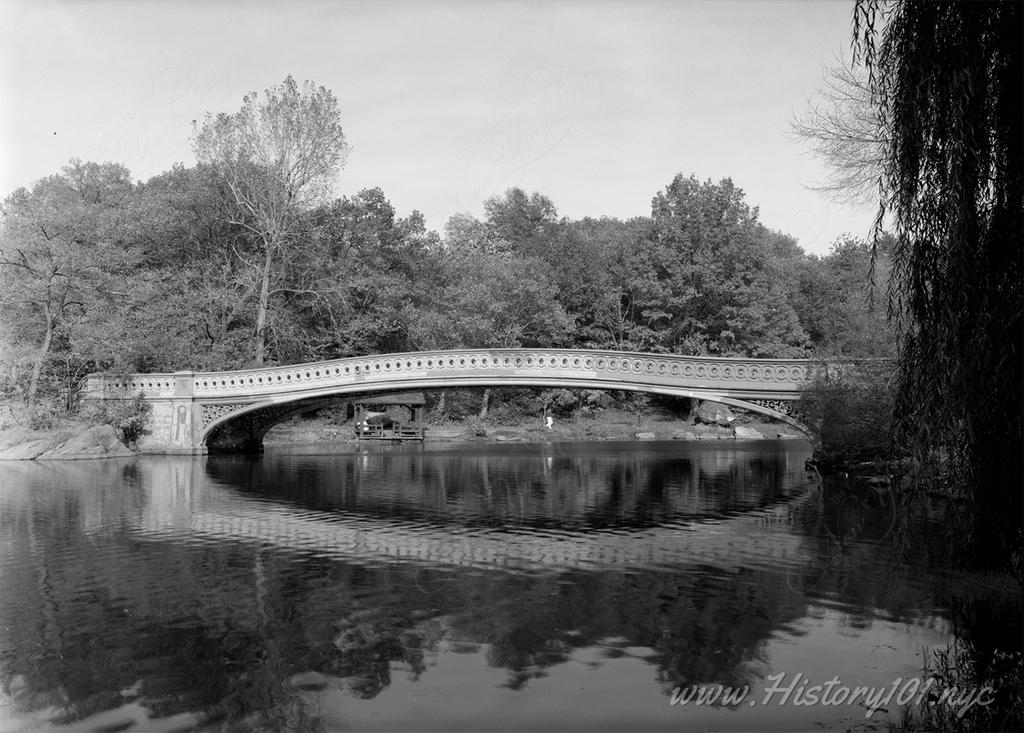
1984: Central Park Bow Bridge over Lake
Photograph of Central Park's Bow Bridge. One of the park's many rustic pavilions is visible under the left side of the arch.
